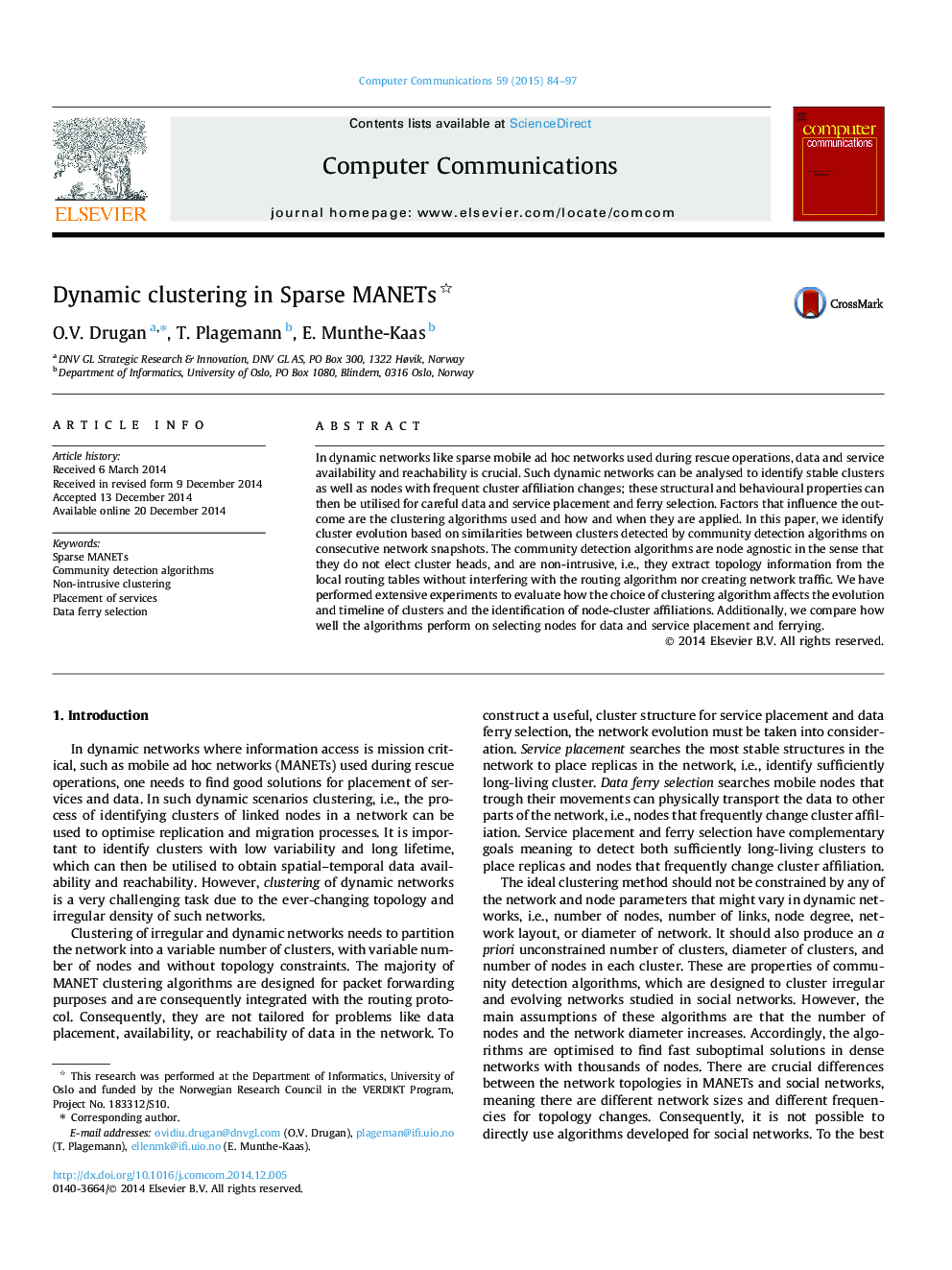| Article ID | Journal | Published Year | Pages | File Type |
|---|---|---|---|---|
| 447744 | Computer Communications | 2015 | 14 Pages |
In dynamic networks like sparse mobile ad hoc networks used during rescue operations, data and service availability and reachability is crucial. Such dynamic networks can be analysed to identify stable clusters as well as nodes with frequent cluster affiliation changes; these structural and behavioural properties can then be utilised for careful data and service placement and ferry selection. Factors that influence the outcome are the clustering algorithms used and how and when they are applied. In this paper, we identify cluster evolution based on similarities between clusters detected by community detection algorithms on consecutive network snapshots. The community detection algorithms are node agnostic in the sense that they do not elect cluster heads, and are non-intrusive, i.e., they extract topology information from the local routing tables without interfering with the routing algorithm nor creating network traffic. We have performed extensive experiments to evaluate how the choice of clustering algorithm affects the evolution and timeline of clusters and the identification of node-cluster affiliations. Additionally, we compare how well the algorithms perform on selecting nodes for data and service placement and ferrying.
